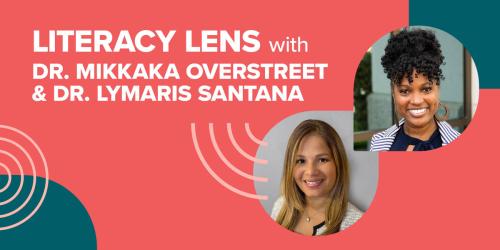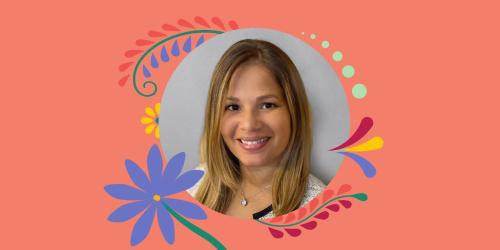Making a Personal Connection to ELL Research
As a researcher working with English language learners (ELLs) and their families, Claudia Rodriguez-Mojica draws from her own experiences in learning English while in school. She has memories of getting pulled out of class as a child for small group English sessions until one day when she wasn't pulled out anymore.
She can relate to the confusion ELL students often experience and has a vivid memory of an oral test she took to test her English proficiency. The test giver showed her a picture of a girl with a yellow balloon and asked what she saw. While she could easily see the girl and balloon in the picture, she couldn't understand why she was asked about it. "It felt like a trick question," Rodriguez-Mojica says, "not a real communicative exchange.”
Rodriguez-Mojica, who is completing her Ph.D. at Stanford University this summer, joined Education Northwest in January and is working on program evaluations and a number of other projects. In particular, she is interested in what it means to be proficient in English and what ELL students can do in real-time classroom communication. "The research community is not in agreement on what it means to be English proficient,” she says, "and there isn't agreement on whether tests can accurately capture English proficiency."
She suggests other approaches to assessing learning that measure what an ELL student can and cannot do and look at how students accomplish various academic tasks in the classroom. "They can demonstrate language skills by 'doing'—by explaining, describing, disagreeing, clarifying—all in English," she says.
We need to recognize what ELLs are able to do with their emerging English. This includes not interrupting ELL speech every time we sense a grammatical mistake. One of the biggest mistakes we make is in thinking that speaking English only means speaking Standard English. We ask English learners to speak in complete sentences when most people don't speak in complete sentences. It's important that we look at the message behind the utterance and get a broader understanding of how they use language rather than focusing on vocabulary and how well they follow Standard English syntax rules.
It's also important to remember that there is no ‘right’ way to speak English. What many think of as grammatical mistakes may be perfectly grammatical Chicano English or African American Vernacular English. To be clear, Standard English is a language variety of great consequence in schools and in society in general. I do not advocate that it be ignored and discouraged but rather that we recognize it for what it is—one of many English varieties in our language repertoire—and not the only way to speak English.
—Claudia Rodriguez-Mojica
Based on her own observations and memories, she suggests that educators consider the challenges students experience when navigating different spaces and situations. "It takes awhile to understand why it's all right to speak one way at home but not at school and vice versa. I wish I had known that it was not only okay but completely normal that language expectations be different in different contexts," she says. "The ability to navigate in more than one language is extremely valuable, but at a young age it's difficult to see that, especially when your language use is frequently corrected."
A piece of advice she gives to students is to be patient with their language acquisition. “As English learners, we can become frustrated at not knowing certain words or understanding idioms,” she says. “Language acquisition is a lifelong process and even monolingual English speakers continue to learn aspects of the language well into adulthood. Also, many words and idioms are regional and are constantly changing, so fully knowing a language would be extremely challenging.”


